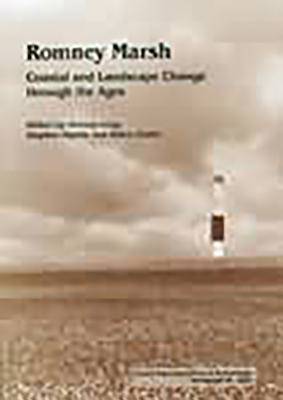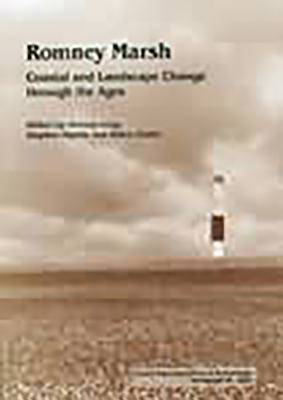
- Retrait gratuit dans votre magasin Club
- 7.000.000 titres dans notre catalogue
- Payer en toute sécurité
- Toujours un magasin près de chez vous
- Retrait gratuit dans votre magasin Club
- 7.000.0000 titres dans notre catalogue
- Payer en toute sécurité
- Toujours un magasin près de chez vous
Description
Romney Marsh, the third largest coastal wetland in Britain, is a triangular-shaped landmass which projects into Rye Bay, Sussex and the eastern English Channel. For the last 10,000 years the sea has vacillated across the region, leaving rich sediments extending to depths of 20m or more. For the past 18 years the Romney Marsh Research Trust has been studying the history of this unique environment and the people who have occupied it. This is the fourth volume in the Romney Marsh monograph series, and its thirteen papers range across environmental, archaeological and historical themes. The authors demonstrate the dynamism of the Romney Marsh landscape over many thousands of years, focusing on the period between AD 200 and AD 1700, which takes in the end of peat formation and the cessation of major land reclamation. Contents: The Holocene vegetation history of the Romney March region (M Waller); Late Pleistocene/early Holocene environmental change in the Romney Marsh region: New evidence from Tilling Green, Rye (M Waller and J Kirby); Palaeoenvironmental changes during the last 4000 years at Scotney Marsh, Romney Marsh (C Spencer and W Woodland); Reconstructing late Holocene intertidal environments and channel networks: A review of the role of Benthic Foraminfera biostratigraphy on Romney Marsh (J Evans and J Kirby); The evidence for late Holocene foreland progradation and rapid tidal sedimentation from the barrier and marsh sediments of Romney Marsh and Dungeness: A geomorphological approach (A Plater, P Stupples, H Roberts and C Owen); Romney Marsh: Evolution of the historic landscape and its wider setting (S Rippon); The late medieval 'antediluvian' landscape of Walland Marsh (M Gardiner); The Rumenesea Wall, Romney and Walland Marshes: A commentary (J R L Allen); The purpose, construction and operation of a 13th century watercourse: The Rhee, Romney Marsh (J Eddison); Land holding and the land market in a 15th-century peasant community: Appledore, 1400-1470 (S Sweetinburgh); Family identity and Romney Marshlands in Early Modern Kent (M Merry and C Richardson); The world of Daniel Langdon: Public office and private enterprise in the Romney Marsh region in the Early-18th Century (S Hipkin); The symbiotic relationship between the agrarian economy of Romney Marsh and the surrounding region in the 18th Century (A Davison) .
Spécifications
Parties prenantes
- Auteur(s) :
- Editeur:
Contenu
- Nombre de pages :
- 232
- Langue:
- Anglais
- Collection :
- Tome:
- n° 56
Caractéristiques
- EAN:
- 9780947816575
- Date de parution :
- 06-09-02
- Format:
- Livre broché
- Format numérique:
- Trade paperback (VS)
- Dimensions :
- 196 mm x 310 mm
- Poids :
- 870 g

Les avis
Nous publions uniquement les avis qui respectent les conditions requises. Consultez nos conditions pour les avis.






